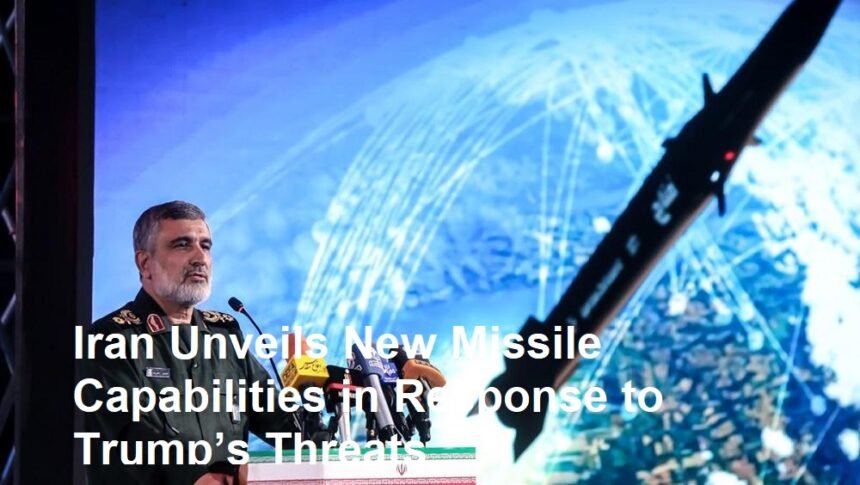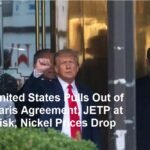In a dramatic escalation of regional tensions, Iran has unveiled a new arsenal of long-range missiles reportedly capable of striking targets deep within Israel. The announcement, made by high-ranking Iranian military officials during a public demonstration, comes in direct response to recent statements by former U.S. President Donald Trump, who had threatened severe repercussions against Iran. The move is widely interpreted as Iran’s defiant show of strength in the face of external pressures.
The Iranian military displayed a series of advanced missile systems at a secure facility in Tehran on February 15, 2025. Officials claimed that these newly developed missiles possess the capability to cover vast distances, potentially reaching targets within Israel’s borders. The demonstration featured several missile models, each equipped with state-of-the-art guidance systems and enhanced propulsion technology, designed to maximize accuracy and range.
During the press conference following the display, a senior Iranian defense spokesperson declared, “This is a clear message: Iran will not be intimidated by any external threats. Our missile systems are a testament to our self-reliance and determination to safeguard our national interests. Should our adversaries cross the line, we are fully prepared to respond with unmatched precision.” The official emphasized that the missile systems were developed to deter any aggression and ensure that regional security is maintained on Iran’s terms.
Experts note that the timing of this demonstration is significant. In recent weeks, former President Trump had renewed his vocal criticism of Iran’s policies, warning of “severe consequences” if the Islamic Republic continued its nuclear and missile programs. While Trump’s statements have long been a source of contention in Middle Eastern politics, they now appear to have triggered a direct military response from Iran. Analysts suggest that by showcasing its missile capabilities, Iran aims to reinforce its deterrence strategy and assert its role as a dominant power in the region.
The missile systems on display reportedly include models with varying ranges and payload capacities. Some of these weapons are said to be capable of carrying conventional high-explosive warheads, while others may be configured for precision strikes using advanced guidance technology. Although specifics regarding their maximum range remain classified, Iranian defense experts assert that these systems are “designed to challenge any coalition of forces that might consider hostile action against us.”
The implications of Iran’s announcement have sent ripples throughout the international community. Many Western nations, already wary of Iran’s nuclear ambitions and regional activities, have expressed concern over the new missile capabilities. U.S. officials reiterated that any aggressive posturing by Iran could destabilize an already volatile Middle East and urged all parties to exercise restraint and engage in diplomatic dialogue.
Israel, in particular, has closely monitored the development of Iranian missile technology. Although no official response has been issued by the Israeli government, security analysts believe that this latest demonstration will likely prompt Israel to reassess its defense strategies. The Iron Dome and Arrow missile defense systems, while robust, may need to be recalibrated to address the increased range and improved accuracy of Iran’s new arsenal.
Meanwhile, regional powers such as Saudi Arabia and Turkey have also taken note of the demonstration. For many countries in the Middle East, the unveiling of these missile systems adds another layer of complexity to an already intricate web of alliances and rivalries. Experts warn that if unchecked, such developments could fuel an arms race in the region, increasing the likelihood of miscalculations and inadvertent conflict.
In response to the growing tensions, international bodies like the United Nations are calling for renewed dialogue between all involved parties. Diplomatic efforts are being reinvigorated as global leaders stress the importance of peaceful resolution and the prevention of further escalation.
In conclusion, Iran’s recent demonstration of its new long-range missile capabilities marks a significant development in the region’s security landscape. Triggered by renewed threats from Trump, this move not only signals Iran’s determination to defend its interests but also raises critical questions about the future stability of the Middle East. As nations brace for the potential fallout, the international community watches closely, hopeful that diplomacy will prevail over military posturing.













